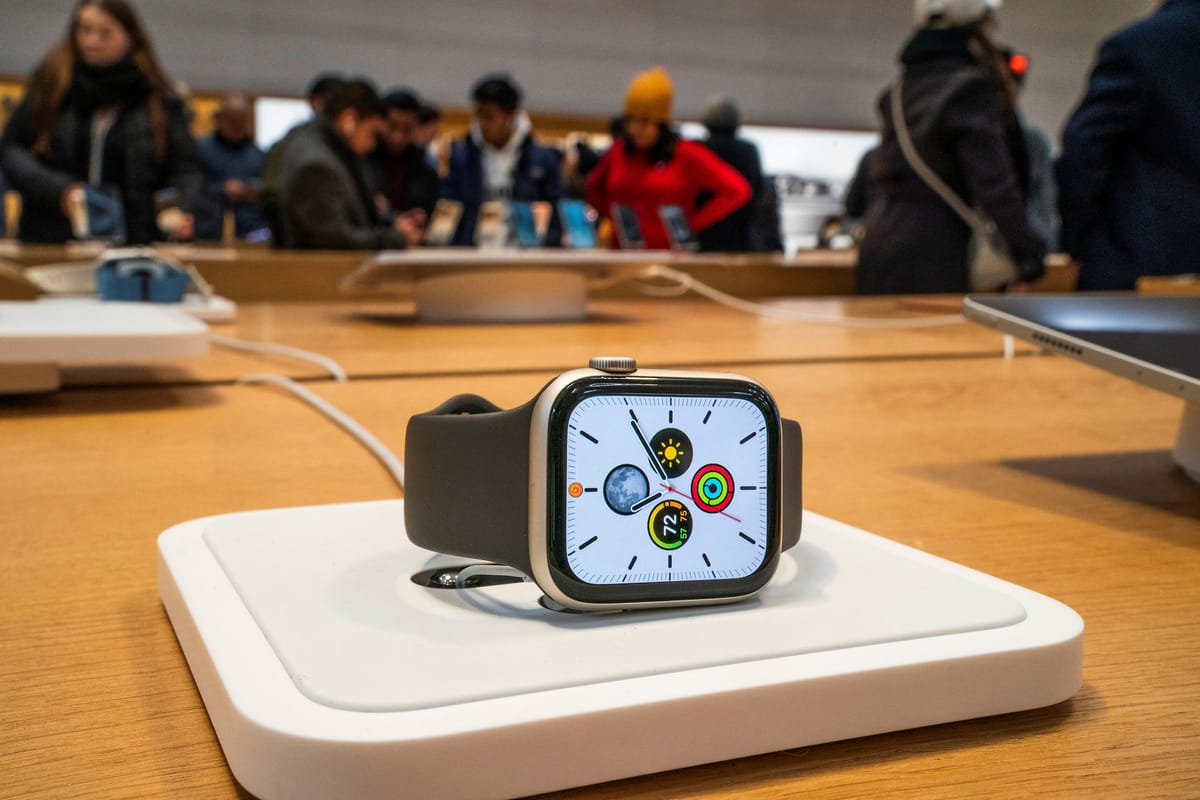Apple may remove the blood oxygen feature from its smartwatches to avoid a ban
If its appeal fails, Apple has found a workaround by redesigning the watch to remove the blood-oxygen feature.

A few minutes every morning is all you need.
Stay up to date on the world's Headlines and Human Stories. It's fun, it's factual, it's fluff-free.
The backstory: When it comes to wearable tech, the Apple Watch is a well-rounded tool, especially for fitness enthusiasts. Its health features, like ECG and blood oxygen readings, are key to its global success. In 2022, Apple sold around 49 million smartwatches. And for the first nine months of 2023, the company had already sold nearly 27 million of them.
But the tech giant has been in hot water over a patent dispute with Masimo, which says some of its former employees who went to work with Apple led the company to copy its technology. Specifically, the launch of Apple’s 2020 Series 6 watch brought the dispute into the spotlight. Masimo said it infringed on its patent on pulse oximetry, which is a technology that uses light to read blood-oxygen levels. Apple countersued, saying the tech wasn’t copied and that Masimo was just trying to make way for its own smartwatch on the market.
In October, the US International Trade Commission (ITC) ruled that Apple had violated the patents and banned imports and sales of the devices in violation. This sparked a review period, where Apple could either work out a licensing deal with Masimo or appeal the ban at the federal level.
More recently: Right before Christmas, Apple stopped selling its latest watches in the US because of the ITC ban, although people could still buy them from other retailers like Amazon, Best Buy, Costco and Walmart. The ban officially went into effect on December 26, but Apple successfully got a US appeals court to pause it the next day. With the ban on hold, the company resumed those sales while appealing the ITC ruling.
The development: If its appeal fails, Apple has found a workaround by redesigning the watch to remove the blood-oxygen feature. This would only apply to watches in the US, and it wouldn’t affect any Apple Watch owners who already have a device with the feature. The redesign specifically applies to its latest models, the Apple Watch Series 9 and Apple Watch Ultra 2. Masimo’s lawyers said in a court filing on Monday that US Customs and Border Protection approved the adjustment on January 12. The agency “decided that Apple’s redesign falls outside the scope” of the ITC’s ban. Separately, Apple is still asking the federal court to pause the ban throughout the entire appeals process.
Key comments:
“The ITC found that Apple stole Masimo’s patented pulse oximetry technology, which measures blood oxygen,” said Masimo in a statement. “The ITC undertook a thorough legal process and its expert judgment in this matter should be respected, protecting intellectual property rights and maintaining public trust in the United States’ patent system.”
"Masimo has wrongly attempted to use the ITC to keep a potentially lifesaving product from millions of U.S. consumers while making way for their own watch that copies Apple," said an Apple spokesperson. "While today’s decision has no immediate impact on sales of Apple Watch, we believe it should be reversed and will continue our efforts to appeal."
“Apple may have paid a steep price to get around a US import ban,” Bloomberg Intelligence analyst Tamlin Bason said in a note. “That was a highly touted feature.”




Comments ()